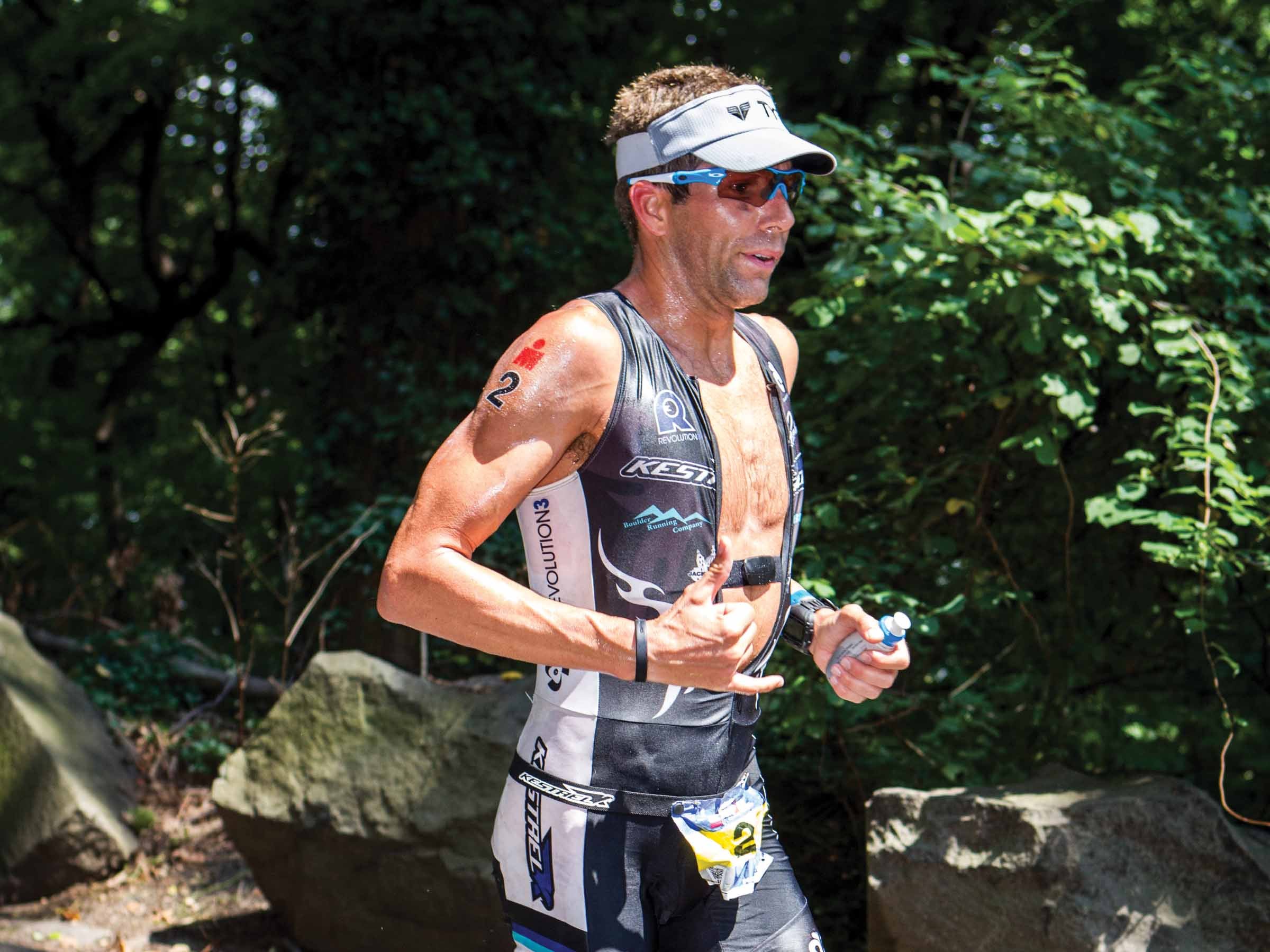Michael Lovato’s Top Run Tips

Photo: Larry Rosa/Endurapix
Three ways to run faster and more efficiently without training harder.
Three-time Ironman champion Michael Lovato leads a half-dozen triathlon training camps and clinics annually, so he’s used to fielding questions on all things run—especially due to his top-ranking marathon and half-marathon splits. Lovato was the featured coach at Race Quest Travel’s Costa Rica Camp, where we gleaned a few of his fleet-footed tips.
When it comes to foot strike, “where” trumps “how.”
“It’s not so important how your foot falls,” Lovato advises, “but where it falls is crucial. Rather than taking long strides that thrust your feet in front of you and tend to exaggerate any problems you may have—as well as causing a braking movement that can lead to injury—focus on shorter, rapid strides that keep your feet hitting directly below your body. Not only is this more efficient, it makes use of the strong and forceful glutes, quadriceps and hip flexor muscles more so than your hamstrings.” Lovato points to fellow pro Mirinda Carfrae as a textbook example of this ideal running style.
RELATED – Training Tip: Stop Overstriding
It’s all in the … arms?
“When your legs start to fatigue, your arms can help keep them moving,” Lovato says. “Speed up your arm swing and you’ll also speed up your leg turnover. Maintain your arms the entire run—whether a 10K or a marathon. Keep your arms bent at slightly less than a 90-degree angle and drive those elbows from your torso backward. Don’t be too worried if your arms cross a little in front of your body, just be sure not to rotate your shoulders.”
RELATED: Triathlon Running Advice From Ironman World Champion Pete Jacobs
Pack a punch through pacing.
“Most triathletes have plenty of passion and competitiveness on race day—that stuff’s naturally there,” Lovato says. “But we need to work on harnessing that spirit a bit through proper pacing, so that we can beat people at the end of the run, rather than being left in the dust after going out too hard, too soon.” Lovato advocates progressive run training, meaning you clock a faster pace at the end of a run than at the start. He suggests making your long run progressive every other week in training, based on three potential platforms:
1. Negative split: Simply put, the last half of the run is faster than the first half.
2. Steady build: Split a 12-mile run, for example, into four progressive 3-mile blocks—easy, moderate, hard, very hard.
3. Blocks within the long run: Try 3×2 miles, 4×10 minutes, or at times even longer intervals. The goal is to make each block faster than the previous, but to run them all at realistic progressive paces.
RELATED PHOTOS: Racing In Costa Rica
Interested in training with Lovato? Check out Race Quest Travel’s Costa Rica Camp in February 2014, where he will again serve as head coach (Race-quest.com).